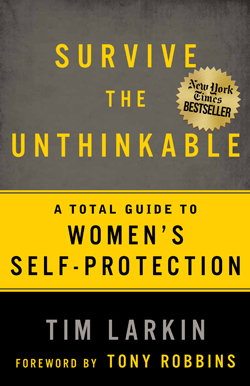When is violence necessary to protect yourself?
Self-defense and the question of when it is or isn't appropriate to use violence to defend yourself have been topics of increasingly heated discussion of late. How do you know when your life is truly being threatened? When do you need to fight back and when can you safely walk away?
Michael Dunn claimed he felt his life was in danger when he shot and killed 17-year-old Jordan Davis in a dispute over loud music in a Jacksonville, Fla., parking lot on Nov. 23, 2012.
George Zimmerman claimed a violent altercation made him fear for his life when he fatally shot Florida teen Trayvon Martin on Feb. 26, 2012.
Self-defense expert Tim Larkin says, aside from their deadly outcomes, the two cases had something else in common.
In both cases, Larkin says, those involved made choices that "upped the ante to the point where there was lethal action taken."
In the minutes leading up to when Dunn, 47, fired his gun, killing the unarmed Davis, the two engaged in a dispute over loud music.
Dunn had pulled into a parking space outside a gas station in Jacksonville, Fla., beside the SUV holding Davis and three other teens. The teens were blasting loud music and when Dunn asked them to turn it down, they obliged, but then turned the music back up after Davis objected. This initiated a verbal back and forth between Davis and Dunn in which, Dunn says, Davis threatened to kill him and began getting out of the car.
In February, Dunn was convicted of three counts of attempted murder for firing into the SUV, but the same jury deadlocked on whether Dunn was guilty of murder for killing Davis. Prosecutors said they will retry him.
In Larkin's opinion, either side could have disengaged before the situation turned violent.
Similarly, in the Zimmerman case, Larkin believes the deadly outcome could have been avoided.
Throughout Zimmerman's trial, prosecutors painted him as a vigilante, frustrated by the break-ins that prompted him to launch a neighborhood watch program. They said Zimmerman profiled Trayvon Martin as a criminal and followed him as he walked through the gated community. Defense attorneys, however, claimed Martin threw the first punch and slammed Zimmerman's head into a concrete sidewalk.
Zimmerman, 29, was acquitted of second-degree murder in July 2013.
"Zimmerman could have disengaged," Larkin says. "He didn't have to do what he did to lead him to the end result."
Both the Dunn and Zimmerman confrontations are examples of what Larkin calls anti-social aggression.
"In anti-social aggression, as we're defining it, you always have a choice. You're choosing to participate in it. 'My ego's hurt, so I'm going to come back at you.' Those are the situations that are easily avoidable," he says.
Larkin, who teaches workshops on a self-protection technique he calls Target Focus Training, says it's important to recognize when you can avoid violence and when you are truly facing imminent, life-threatening danger and have to do whatever you can to survive.
Road rage, he says, is an example of avoidable, anti-social aggression. At any point, he says, the conflict can be ignored and disengaged from. In a robbery or mugging, "[if] you have the choice to, say, give them your iPhone or give them your wallet and disengage, then that's what you try first."
Conversely, asocial violence is exemplified in a situation like a school shooting or an attack by a serial killer or dangerous psychopath. Disengaging or reasoning with the assailant may not be an option.
"There's no choice involved there. You're involved in this whether you want to or not...You can't avoid violent confrontation," he says.
That's when fighting violence with violence may be the only option.
"The use of violence in self-defense has to be devoid of choice. You have to be facing grievous bodily harm, it has to be imminent and there's no exit for you. There's nothing that you can do. That is really the only justification to use the type of violence that both [Zimmerman and Dunn] used."

